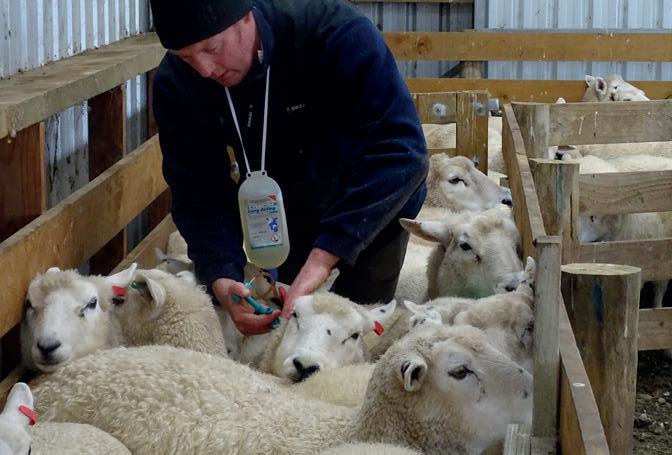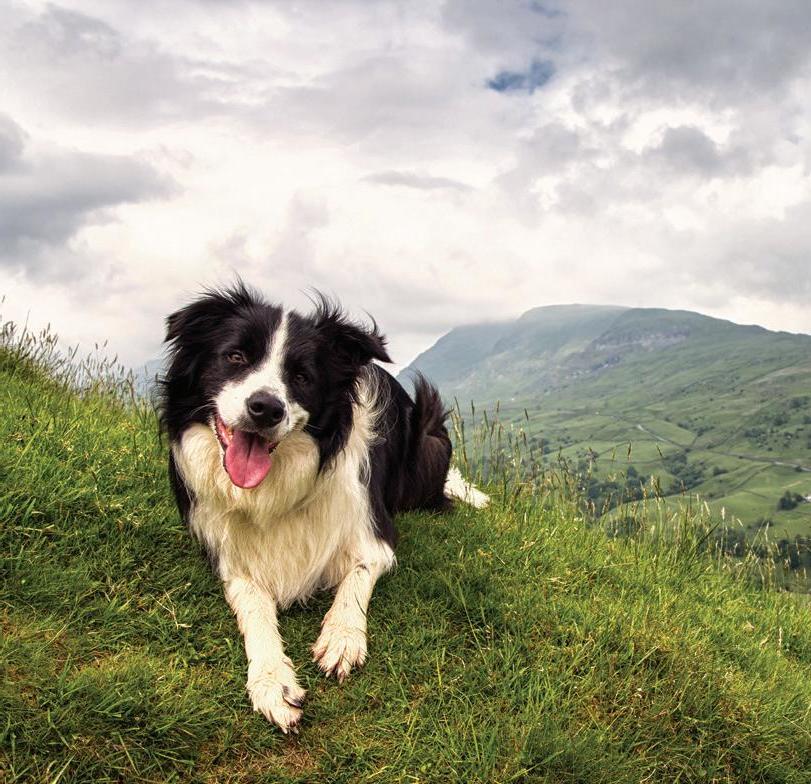
2 minute read
Where do mid-acting drenches fit at pre-lamb?
Winter is setting in which means scanning and pre-lamb is not far away. It’s a good time to consider which pre-lamb treatment your ewes will need this year and when to give it to them.
Regardless of feed, body condition or the number of lambs on board, all ewes need a 5in1 vaccination to protect them and their lambs. After that, you need to think about the other challenges they will face, such as how robust the ewes are, their ability to cope with health challenges and whether you can tip the balance in their favour leading up to and during lambing. If ewe immunity is compromised due to poor body condition, lowered feed quantity or quality, or an increased challenge of parasites, supporting their immune system with an effective drench can be very beneficial. By removing the parasites in the ewes and protecting them from incoming larvae, the ewe doesn’t have to divert and waste protein and energy to fight off the worms. Instead this protein can be used to support the foetus or her body condition and therefore milk production. The length of worm control that is given depends on how much protection is required. A clean-out drench has very little production impact1, as it is the ingestion of thousands of larvae daily, that does the damage2. The longer the worm protection, the better the production-response will be. However, this does need to be balanced with the risk of drench resistance. With this in mind, farmers should only treat ewes with a long-acting drench that really need it. If they are in good condition, or have plenty to eat, then a 5in1 should be fine by itself. Ewes should be treated ‘as individuals’ according to their needs, which enables the right drench to be used for the right purpose, minimising use and delaying drenchresistance. Eweguard® and Cydectin® Injection are good choices for ewes that need a few weeks of worm protection around the lambing period. They both offer up to 35 days protection against Teladorsagia circumcincta, arguably the most common and problematic parasite affecting sheep at this time of year. Removing parasites has been shown in pre-lamb trials to increase ewe production with heavier lambs at weaning and less daggy ewes1, 3. If labour is an issue on the farm, Eweguard has the benefit of also containing a 5in1 vaccine component, as well as a vaccine for cheesy gland (lympho), cutting down considerably on workload. It is available with or without therapeutic doses of selenium, helping to prevent weak lambs at birth and white muscle disease.
For more information on Eweguard, Cydectin Injection or selective treatment of ewes, talk to your local Farmlands Technical Field Officer, or the friendly team at your local Farmlands store.
Article supplied by Zoetis Zoetis New Zealand Limited. Tel: 0800 963 847; www. zoetis.co.nz. Eweguard and Cydectin are registered trade marks of Zoetis. ACVM Nos. A5979, A7302, A9122 1. CM Miller, S Ganesh, CB Garland & DM Leathwick, Production benefits from pre- and post-lambing anthelmintic treatment of ewes on commercial farms in the southern North Island of New Zealand. NZVJ 2015 2. Leyva, V. Henderson E, Sykes A. The effect of daily infection with O. circumcincta larvae on the performance of pregnant and lactating sheep. Proceedings of the NZ Society of Animal Production, 41, 1981 3. Zoetis data on file












